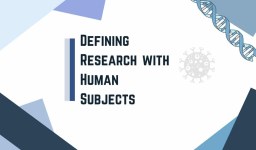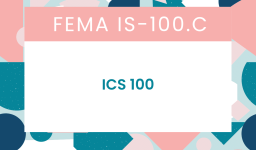- 11th Grade
- Lexile: 1310
Source: “Enemies from Within” Speech by Senator Joseph McCarthy
Assessment Answers
| Question | Answer |
|---|---|
| PART A: How does McCarthy frame the conflict between democracy and communism in his introduction (Paragraphs 3-6)? | McCarthy frames the conflict between democracy and communism as that between a Christian society and the threat of atheism. |
| PART B: Which of the following quotes best supports the answer to Part A? | “Today we are engaged in a final, all-out battle between communistic atheism and Christianity.” (Paragraph 3) |
| Why does McCarthy likely mention John Service and Gustave Duran in paragraphs 12-14? | McCarthy uses them as examples of communist corruption in the State Department, as both men received better positions despite suspicion of communist sympathies. |
| What does McCarthy seem to be suggesting in the final paragraph in his speech? | He seems to be suggesting that a sort of political purge is needed, if not oncoming, in American government and society. |
“As one of our outstanding historical figures once said, ‘When a great democracy is destroyed, it will not be because of enemies from without but rather because of enemies from within.'” (Paragraph 7)
How does this quote reveal McCarthy’s point of view and advance the purpose of his speech?
This quote reveals McCarthy’s point of view that the greatest threat to American democracy comes not from external adversaries but from internal subversion and corruption
By invoking the words of a respected historical figure, McCarthy aims to lend credibility and gravitas to his argument, suggesting that the danger of communist infiltration within the U.S. government and society is both real and imminent.
The purpose of his speech is to alert and mobilize the American public and policymakers against what he perceives as a significant internal threat posed by communists and communist sympathizers within the United States.
By framing the issue in this way, McCarthy seeks to justify his calls for aggressive investigations and actions to root out communism from the government and other areas of American life.
This quote advances his purpose by framing the fight against communism as a patriotic duty to protect the nation from internal destruction, thereby encouraging support for his anti-communist crusade.
How do McCarthy’s references to Abraham Lincoln at the beginning and end of his speech support his argument?
McCarthy’s references to Abraham Lincoln at the beginning and end of his speech serve to support his argument by invoking the legacy of one of America’s most revered Presidents, known for his leadership during a time of deep national division and conflict.
By aligning his anti-communist crusade with Lincoln’s efforts to preserve the Union and uphold American values, McCarthy seeks to frame his own actions as similarly patriotic and necessary for the nation’s survival.
At the beginning of the speech, by mentioning the celebration of Lincoln’s birthday, McCarthy taps into the symbolic power of Lincoln’s commitment to unity and justice. This sets a tone that positions McCarthy’s subsequent arguments as aligned with Lincoln’s legacy of protecting the nation against threats to its fundamental principles.
By closing his speech with a reference to Lincoln, McCarthy reinforces the idea that the fight against communism is not just a political issue but a moral imperative akin to Lincoln’s struggle against slavery.
This comparison implicitly elevates McCarthy’s campaign against communism, suggesting it is a continuation of Lincoln’s mission to preserve democracy and freedom in the face of existential threats.
Thus, the references to Lincoln serve to bolster McCarthy’s argument by drawing a parallel between his own efforts to root out communism and Lincoln’s efforts to save the Union, thereby appealing to American patriotism and the respect for Lincoln’s leadership and moral clarity.
This rhetorical strategy legitimizes McCarthy’s controversial tactics by associating them with Lincoln’s universally admired legacy.
Discussion Answers
At the time of this speech, why did America fear communism? What did communism represent to the American people and why? How did history influence this fear?
At the time of McCarthy’s speech in 1950, America’s fear of communism was shaped by a complex mix of historical, political, and social factors. Communism represented several key threats to the American people, influenced by recent history and the broader context of the Cold War. Here are the main reasons for this fear:
- Ideological Opposition: Communism, with its roots in Marxist ideology, advocates for a classless society and the abolition of private property. This fundamentally opposed American values of capitalism, individualism, and private property rights. The American economic and political systems were built on principles that were diametrically opposed to those of communism, leading to a natural ideological conflict.
- The Cold War: After World War II, the geopolitical tension between the United States (and its allies) and the Soviet Union escalated into the Cold War. This period was marked by a fierce rivalry and the threat of nuclear war. Communism, particularly as it was practiced by the Soviet Union, represented a global threat to American influence and the spread of democracy.
- Historical Context: The Russian Revolution of 1917 and the subsequent establishment of the Soviet Union as the first communist state had a profound impact on the global political landscape. The success of the Bolsheviks in seizing power and the spread of communist ideology through Eastern Europe after World War II alarmed the United States, which feared a domino effect that could spread to other regions.
- Domestic Concerns: The Great Depression of the 1930s had demonstrated the vulnerabilities of the capitalist system, leading some Americans to explore communism as an alternative. This, combined with the activities of the Communist Party USA and the high-profile espionage cases (e.g., the Rosenbergs, Alger Hiss), fueled fears of internal subversion and the possibility that communists within the United States could undermine the government and American way of life.
- Korean War: The outbreak of the Korean War in 1950, the same year McCarthy delivered his speech, served as a tangible example of the perceived global expansion of communism. North Korea’s invasion of South Korea, supported by China and the Soviet Union, was seen as part of a broader communist agenda to spread its ideology worldwide.
- Anti-Communist Propaganda: The U.S. government and media played significant roles in amplifying the threat of communism. Propaganda efforts portrayed communists as godless, freedom-hating individuals who sought to destroy the American way of life. This narrative was pervasive and contributed significantly to the public’s fear.
In summary, the fear of communism in America during the early Cold War era was the result of ideological opposition, geopolitical rivalry with the Soviet Union, historical events that seemed to validate fears of communist expansion, domestic incidents that suggested a covert threat, and a concerted effort by government and media to highlight and sometimes exaggerate the dangers posed by communism.
In the context of this speech, how does prejudice emerge? Can McCarthy be entirely to blame for the Red Scare of the 1950s? What other factors, if any, led to this panic?
In the context of Senator Joseph McCarthy’s speech, prejudice emerges in several ways, primarily through the broad generalizations and accusations made against individuals and groups without sufficient evidence.
This approach fostered an environment of suspicion and fear, where being accused was often equated with guilt, leading to widespread paranoia and the persecution of many innocent people.
While McCarthy became a leading figure in the Red Scare of the 1950s, he cannot be entirely blamed for the era’s climate of fear and suspicion. Several other factors contributed to this panic:
- Historical Context: The Red Scare of the 1950s, often referred to as McCarthyism, was not the first wave of anti-communist sentiment in the United States. The First Red Scare, following World War I and the Russian Revolution, set a precedent for viewing communism as a direct threat to American values and security. This earlier period established a foundation for later fears and actions.
- Cold War Tensions: The geopolitical rivalry with the Soviet Union and the onset of the Cold War significantly heightened fears of communism. Events like the Berlin Blockade, the Soviet Union’s acquisition of nuclear weapons, and the Chinese Communist Revolution (1949) contributed to a sense of an expanding and imminent communist threat.
- Espionage Cases: High-profile espionage cases, such as those of Alger Hiss and Julius and Ethel Rosenberg, fueled fears that the U.S. government and other institutions had been infiltrated by communists. These cases provided seemingly concrete evidence that communists were actively working to undermine the United States from within.
- Media and Political Rhetoric: Politicians and the media played crucial roles in amplifying fears of communism. Sensationalist reporting and the use of communist fearmongering as a political tool by some politicians helped to create an atmosphere of hysteria and suspicion.
- Social and Economic Conditions: The post-World War II era was a time of significant social and economic change in the United States. The uncertainties of the post-war adjustment period, including fears about job security and the changing role of the United States in the world, made many Americans more susceptible to fears about internal threats and the appeal of strong anti-communist stances.
- Government Actions: The federal government’s actions, including the establishment of loyalty review programs and the House Un-American Activities Committee’s investigations into alleged communist activities, institutionalized the hunt for communists and legitimized the fear and prejudice against perceived subversives.
In summary, while McCarthy played a significant role in stoking the fires of the Red Scare through his public accusations and investigations, he was part of a larger context of fear, suspicion, and political maneuvering.
The emergence of prejudice during this time was fueled by a complex mix of historical, political, and social factors transcending any individual’s actions.
In the context of this speech, how can fear be used to manipulate? Cite evidence from this text, your own experience, and other literature, art, or history in your answer.
In the context of Senator Joseph McCarthy’s speech, fear is used as a powerful tool to manipulate public opinion and political agendas. McCarthy capitalized on the prevailing fear of communism to bolster his own influence and to push for aggressive policies against those he accused of being communists or communist sympathizers.
Here are ways in which fear can be used to manipulate, drawing on evidence from McCarthy’s speech, historical examples, literature, and art:
- Creating a Common Enemy: McCarthy’s speech exemplifies how fear can be used to create a common enemy (in this case, communists and their sympathizers), uniting people under a shared threat. By framing communism as a direct threat to American values and way of life, McCarthy taps into nationalistic sentiments and fear of the unknown. This technique of creating a common enemy is a classic manipulation method, rallying people to a cause by identifying a clear antagonist.
- Urgency and Immediacy: McCarthy suggests that the threat is not only real but immediate, requiring urgent action. This sense of urgency pressures individuals and institutions to act quickly, often bypassing rational judgment and normal checks and balances. The claim that the U.S. is engaged in a “final, all-out battle between communistic atheism and Christianity” (McCarthy, 1950) is designed to provoke an emotional response and a sense of crisis that can be exploited.
- Appeal to Authority and Patriotism: McCarthy invokes the legacy of Abraham Lincoln and aligns his anti-communist crusade with Lincoln’s efforts to save the Union. This appeal to authority and patriotism seeks to legitimize his campaign and position it as a patriotic duty. By associating his actions with those of a revered president, McCarthy manipulates public sentiment by suggesting that opposition to his methods is unpatriotic.
- Historical Examples: History is replete with instances where fear has been used to manipulate populations. For example, the witch hunts in early modern Europe and colonial America were fueled by fear of the unknown and the desire to find scapegoats for societal problems. Similarly, the Nazi regime’s propaganda machine used fear of the “other” (e.g., Jews, Communists) to justify its actions and consolidate power.
- Literature and Art: Literature and art have long explored how fear can be manipulated for control. George Orwell’s “1984” depicts a dystopian society where fear of an omnipresent state controls every aspect of life, illustrating how fear can be institutionalized. Similarly, Arthur Miller’s “The Crucible,” while set during the Salem witch trials, is an allegory for the Red Scare and McCarthyism, showcasing how fear and suspicion can lead to hysteria and injustice.
In conclusion, fear is a potent tool for manipulation, as evidenced by McCarthy’s speech and numerous examples from history, literature, and art.
By creating a common enemy, instilling a sense of urgency, appealing to patriotism, and exploiting societal anxieties, individuals and groups can wield fear to achieve their own ends, often at the expense of rationality, justice, and individual rights.
Other Commonlit Answers
- The War Prayer Commonlit Answers
- Introduction To The Holocaust Commonlit Answers
- How Resilience Works Commonlit Answers
- Why You Should Find Time To Be Alone With Yourself Commonlit Answers
- The Interlopers CommonLit Answers
- Smartphones Put Your Privacy At Risk Commonlit Answers
- What Makes Good People Do Bad Things CommonLit Answers
- The Cask Of Amontillado CommonLit Answers
- Allegory Of The Cave CommonLit Answers
- Excerpt From The Prince Commonlit Answers
- The Masque Of The Red Death Commonlit Answers
- The Danger Of A Single Story Commonlit Answers
- Why Do We Hate Love?




Leave a comment